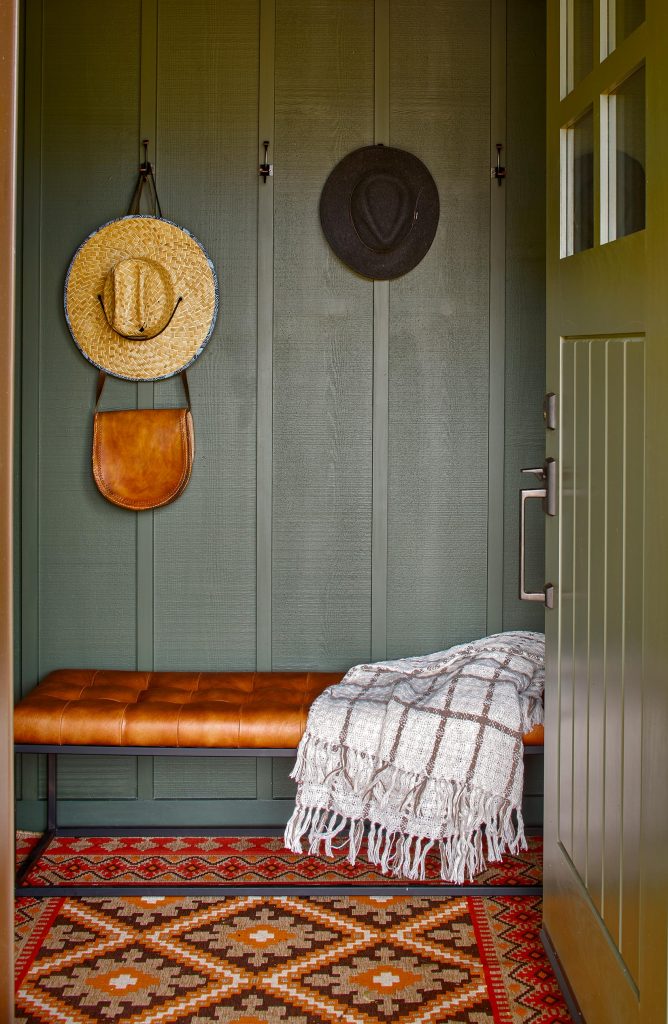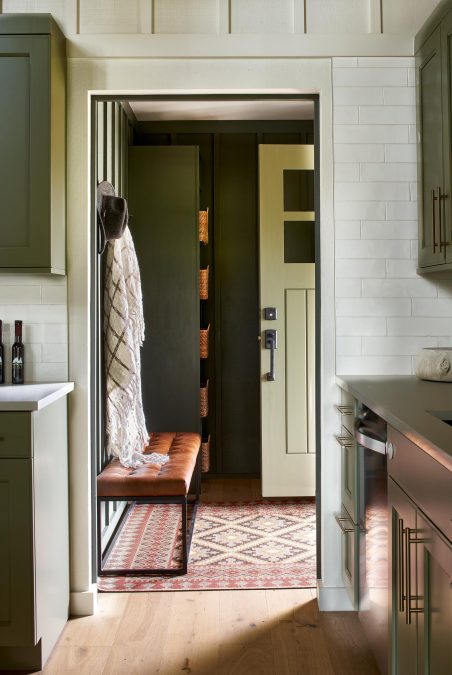When it comes to living in the mountains, the term “mudroom” could not be taken more literally. A mudroom is, in fact, one of the most functional and utilized spaces in a mountain house, a place where you can kick off your shoes, which, more often than not, are literally covered with mud. “It is important here in Steamboat to have an adequate space for all your gear simply because we are so active, we are outside all the time, and we have lots of extra toys,” says Lindsey Jamison, Partner and Lead Designer for Rumor Designs, a Steamboat-based interior design firm. It’s also very personal. “A mudroom reads differently depending on how the family functions, but the end goal is always the same,” she says. “It should be a landing space for when you walk in, a way to contain clutter and to keep it from being scattered.”
Whether you’re designing a custom house from scratch or wanting to better organize your entryway into a more functional space, here are a few tips for putting your shoes in the right place.

Get your foot in the door.
For all those times you told your kids, “you don’t live in a barn,” it might be time to change your tune. Barndoors offer the perfect combination of function and style when it comes to mudroom design. “A barndoor can slide back easily to provide access, but it still looks nice when it’s closed, and then all the clutter of a mudroom is hidden,” Jamison says. “There are so many new, fun, and interesting styles of barndoors, and it’s a great way to separate the mudroom from the foyer and to hide your mess, especially if you have kids.”
Play with color.
A mountain house might conjure up images of earth tones and natural materials, but a mudroom is a space where you can have a little fun and break away from the rest of your home’s overall design. “A mudroom is a fun spot to be playful and should be considered a separate space from the rest of the house,” Jamison says, and one way to achieve that is with a pop of unexpected color. “Lately, there’s been a trend for using really rich colors for the cabinetry. We’re seeing a lot of teal, navy, and other shades of greens and blues. It should be totally different from the kitchen and bathrooms,” Jamison says.

David Patterson Photography
Storage for days.
The main function of a mudroom is to create optimal ways to store stuff, from everyday items like jackets and shoes to all kinds of gear like helmets, ski boots, and dog leashes. “We had one client who wanted to store her bikes inside, and we have other clients who want a place to store dog food and leashes. It really depends on your specific needs. The first step is to sit down and figure out how you want to use the space, and then to come up with a drawing to determine how to configure it all,” Jamison says. Storage can be achieved in numerous ways, from cabinetry and drawers to shelving, cubbies, benches, and hooks. “It’s really all about function and flow, whether that means allocating designated spaces for each child, for each activity, or even for the family dog. The idea is when it’s time to go out, you’re not running around going crazy looking for stuff,” she says. Everything should have its place.

Don’t have room? Make room.
Even if you don’t have a large space or the luxury of designing something custom, a mudroom can be achieved with simple pieces like open shelving and storage bins. “It doesn’t have to be a built-in piece or even a chunky piece of furniture. Open shelving and baskets, benches with storage, and double hooks can create a mudroom,” Jamison says. The key is to come up with ways to organize, store, and conceal items that create clutter. Whether it’s a luxury home or a small rental, a mudroom is the place that welcomes you—and your muddy shoes—home. //rumordesigns.com.

